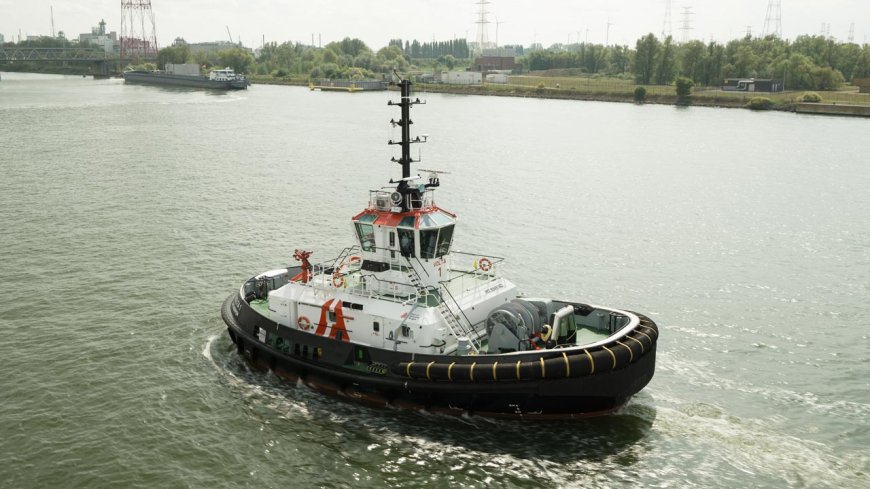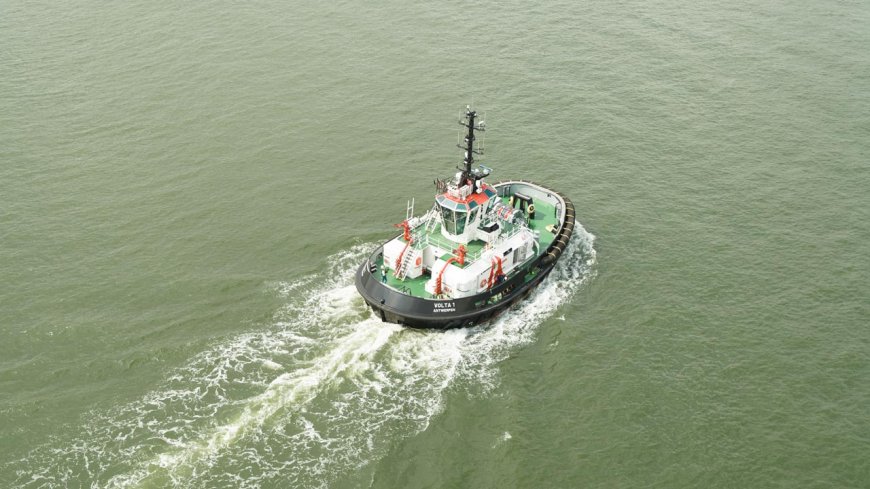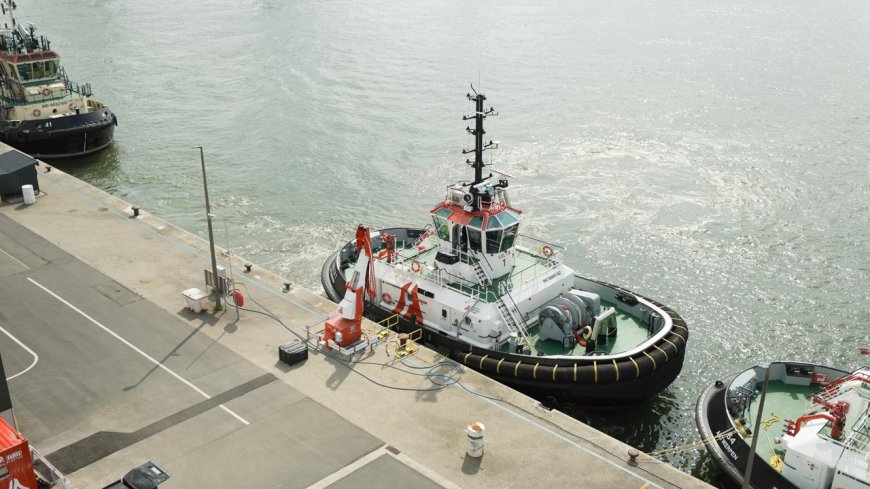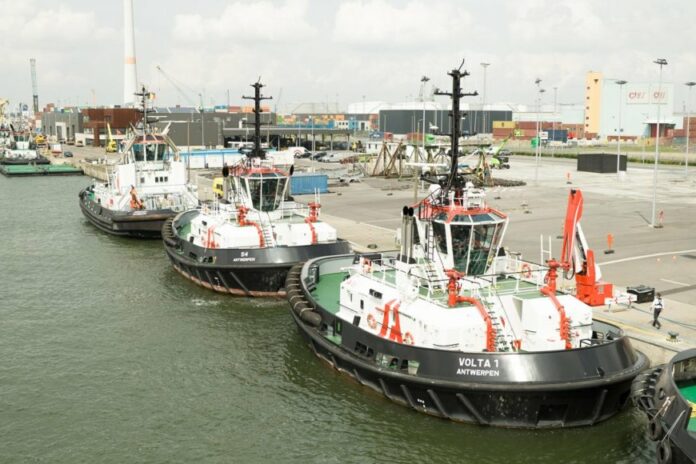The Volta 1 is a Reversed Stern Drive (RSD) tugboat designed on a double bow principle and equipped with a patented Twin Fin skeg for optimal stability and manoeuvrability.
As a result, it can be used flexibly as a front and back tugboat. With its battery capacity of 2,782 MWh, recharged in as little as two hours via a powerful 1.5 MW charging station, the Volta 1 is completely emission-free and can cruise for up to 12 hours. Its towing power of 70 tons guarantees the same performance as a traditional diesel tug boat.
The Volta 1 is part of a broader renewal of the tug-boat fleet. Together with five energy-efficient RSD tugs, also commissioned today, this replaces older vessels. The tug service, responsible for nearly 85% of port-related CO₂ emissions, is thus undergoing a profound greening. Port of Antwerp-Bruges systematically strives to integrate the most environmentally friendly technologies, as part of its ambition to be climate neutral by 2050.
As the fifth-largest bunker port in the world, Port of Antwerp-Bruges also aims to become a full-fledged multi-fuel port. It therefore wants to offer low-carbon alternatives in addition to bio- and conventional fuels. Over the past year and a half, the port introduced the world’s first hydrogen and methanol-powered tugs. By testing these technologies side by side in the field, Port of Antwerp-Bruges can determine which solution scores best in terms of emissions, cost, autonomy and performance. In doing so, it anchors its role as a pioneer in the international energy transition and hopes to inspire other ports and sectors to take action.

The partnership with Damen Shipyards Group plays a key role in this transition. Damen, which built the world’s first electric tugboat in 2022 in Auckland, New Zealand, began construction of the six RSD tugs for Port of Antwerp-Bruges in 2023 in Vietnam. After a journey of more than 10,000 kilometres, the ships arrived in Antwerp in November 2024. There they were prepared for operational deployment, including a technical start-up, crew training and installation of charging infrastructure. The official launch of the Volta 1 is the culmination of this journey.
Jacques Vandermeiren, CEO Port of Antwerp-Bruges: “The Volta 1 is a powerful example of our strategy to actively integrate sustainable technology into our operations. As a global port, we are taking our responsibility to pull the maritime sector into the energy transition. The Volta 1, together with the Hydrotug, Methatug and RSD tugs, represents a tangible step towards a climate-neutral port by 2050.”

Johan Klaps, Vice Mayor for the Port and Economy City of Antwerp / President of the board Port of Antwerp-Bruges: “Achieving this European first in the year when we are also celebrating 150 years of tug service makes it both symbolic and historic. It shows how our port and region continue to invest in sustainable innovation. Even in challenging times, we resolutely choose the future and take a leadership role.”
Vincent Maes, Sales Manager Benelux Damen: “We are delighted and very honoured to have been able to deliver the latest additions to the Port of Antwerp-Bruges tug fleet: five brand new and efficient diesel tugs equipped with after-treatment systems and an innovative electric tug, all of type RSD2513. This delivery is perfectly in line with our ongoing commitment to better ships and technological progress. We are delighted that this allows us to contribute to achieving the port’s ambitious sustainability targets.”

Specifications of the Volta 1
- 24.73 metres long, 13.13 metres wide and a depth of 6.5 metres
- Weight of 607 tons
- Towing power of 70 tons
- Speed of 12 knots
- 2,782 MWh lithium-titanium-oxide (LTO) batteries charged in 2 hours (12 hours of sailing capacity)
- 1.5 MW charging station



